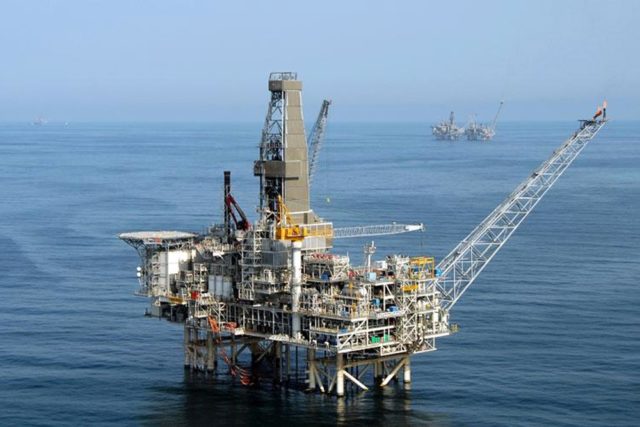
Geopolitical Competition in Caspian Region About More Than Gas and Oil
Publication: Eurasia Daily Monitor Volume: 18 Issue: 55
By:

Geopolitical competition in the Caspian Sea region over oil and natural gas fields, pipelines carrying these hydrocarbons across that body of water, and security measures intended to protect both have attracted the bulk of the attention of the littoral states as well as outside powers in recent years (see EDM, May 28, 2019, May 28, 2020, February 18, 2021, March 23, 2021; Vestnik, February 18, 2021). This is hardly surprising considering the amounts of money involved in such initiatives along with the redistribution of power and influence that typically follows. But intensifying competition in the Caspian over other issues also deserves attention. Not only are these separate forms of intra-regional competition significant on their own, but they also have the potential to affect oil and gas production and flows. Three of these many other forms of rivalry have assumed new prominence in the past several weeks.
First, having just signed a 25-year cooperation agreement with China, Iran has announced plans to build the first artificial island in the Caspian. Such a land reclamation project is not something Tehran could do on its own, but it is now likely to trigger intensified competition among the other littoral states leading to the creation of brand new port facilities (ParsToday, March 30; Vestnik, April 1, 3). Competition among Caspian ports has already been expanding in recent years, particularly because of China’s interest in promoting east-west multi-modal container trade. But many experts had heretofore assumed that the capacity of the ports would remain limited and thus be a limiting factor on Chinese activities. What Iran has just announced, however, raises the possibility that such conclusions are not justified and that port trade may, in fact, expand. Moreover, Iran and China’s activities are likely to encourage emulation from the region’s other coastal countries, further upending current predictions (see EDM, October 16, 2020).
Second, Kazakhstan is seeking to make its Aktau port on the Caspian a hub for both bulk and container trade between Central Asia, on the one hand, and Iran and the West, on the other. This drive involves the modernization of the port as well as the expansion of merchant shipping. However, it puts Kazakhstan on a collision course not only with Russia, which has dominated this trade in the past, but with other Caspian littoral states that themselves have sought a portion of these shipping volumes. At the same time, it may complicate Kazakhstan’s relations with the West, which views such trade with Iran as a way for Tehran to end run the sanctions regime now in place against its nuclear program (SK News, March 23; Vestnik, March 25). In recent years, Kazakhstan has often been ignored as a Caspian player given that existing rail routes have made other countries more significant. But increasingly, Nur-Sultan is signaling its intention to become a major player in areas, including grain and finished products, that China and Iran have a particular interest in but that other littoral states have so far devoted less attention to.
And third, recent reporting about environmental disasters in the Caspian have sparked concerns across the region about the future of the sea and the maintenance of its bio-diversity, including the survival and possible recovery of the local sturgeon, prized for its production of what many consumers consider the world’s best caviar (Astrakhanskiy Listok, March 30). But if the Caspian countries share those environmental concerns, they are not unanimous in their assessments of who is to blame or what should be done. Experts and government officials from the region are preparing to gather in Moscow for an international conference on this subject later this month. Nonetheless, each regional state clearly has its own ideas; and these will undoubtedly be on display at that meeting, likely deepening divisions and sparking further controversies among regional competitors (Kaspiyskii Vestnik [1][2], April 5).
Each of these trends, although rarely considered together with the more readily recognized competition about oil and gas, will affect what happens in that sector as well. Moreover, as more offshore hydrocarbon reserves are discovered in the Caspian—something that currently appears to be happening almost on a weekly basis (News.ru, March 24)—these separate developments are likely to matter more. And in turn, the littoral countries and outside powers working with them to gain access to this oil and gas will be compelled to pay attention to issues they have largely ignored up to now.
China has already done this with its 25-year deal with Iran, and Saudi Arabia is currently in talks with Turkmenistan (Oilgas.gov.tm, March 16). Other countries, including Russia and those in the West, where many of the world’s most important oil majors are located, seem certain to follow. This will require recognition of the reality that what happens in the non-hydrocarbon sectors in the Caspian will play an increasing role not only in how much oil and gas flows out of Central Asia but via which routes and to what destinations. They will also need to recognize that these issues determine how the countries of the region will relate to one another and to outsiders as well as whether the Caspian will be a place for peaceful development or a new cockpit of conflict between them and others.



